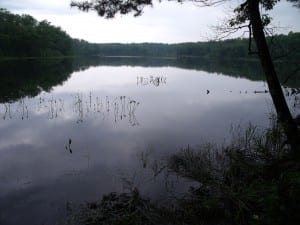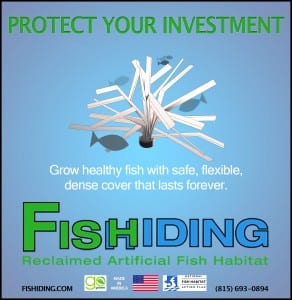CAMPBELL RIVER, BRITISH COLUMBIA–(Marketwire – Jan. 9, 2012) – The Honourable Keith Ashfield, Minister of Fisheries and Oceans, welcomed six British Columbia-made vessels into the departmental fleet today.
“Our government is proud to ensure that Fisheries and Oceans Canada has the tools it needs to regulate the aquaculture industry in British Columbia and ensure that it operates in a sustainable and environmentally responsible manner,” Minister Ashfield said. “We are committed to an economically and ecologically viable fishing and aquaculture industry across Canada.”
The six vessels, of various sizes and construction, are dedicated to the B.C. Aquaculture Regulatory Program and carry out aquaculture regulatory and monitoring activities. Three of the vessels are used by aquaculture management staff for auditing and monitoring aquaculture sites, and three are used by aquaculture fishery officers for enforcement and compliance inspections.
As the majority of aquaculture operations are located along the coast of Vancouver Island and in mainland inlets, and most are inaccessible by car, ensuring DFO staff are able to move freely on the water is an important aspect of regulating the aquaculture industry in B.C. The new Conservation and Protection vessels will allow fishery officers to respond quickly to events or public reports of potential concerns at farm sites, while staff on the aquaculture management vessels can deploy tethered remote underwater vehicles for site inspections and conduct and analyze benthic (ocean bottom) sampling.
Nationally, aquaculture production has increased four-fold in the past 20 years. Approximately 70 per cent of all Canadian aquaculture products are sold to foreign markets, and the world increasingly depends on aquaculture as an essential food source. In fact, globally, half of all fish and seafood is now farmed. British Columbia contributes the most farm-raised fish and seafood to Canada’s output annually.
Backgrounders:
- SIX DFO AQUACULTURE VESSELS FOR B.C.
- FISHERIES AND OCEANS CANADA’S FIRST YEAR AS PRIMARY REGULATOR FOR BRITISH COLUMBIA’S AQUACULTURE INDUSTRY
SIX FISHERIES AND OCEANS CANADA AQUACULTURE VESSELS FOR BRITISH COLUMBIA
Fisheries and Oceans Canada has purchased six B.C.-made vessels to support its effective regulation of aquaculture activities in the province. As the regulator and manager of aquaculture in B.C., Fisheries and Oceans Canada is responsible for ensuring that the industry is abiding by the conditions of licence established for each aquaculture site in the province, adhering to the Pacific Aquaculture Regulations, and following strict guidelines for operations. These vessels will allow departmental staff to carry out these new duties.
Of the six vessels, three are being used by aquaculture management staff to undertake regular audit and monitoring activities at aquaculture sites, and three are tasked with aquaculture fishery officer enforcement activities.
Aquaculture Management Program
Three B.C.-made vessels, the Salmon Bay, the Sturgeon Bay, and the Oyster Bay, are being used by aquaculture management staff for audit and monitoring activities:
- Fish health management inspections
- Sea lice audits
- Stream surveys
- Benthic (ocean floor) sampling and remote-operated vehicle assessments
- Facility inspections
The three program management vessels are named after the three sectors of the fish farming industry: marine finfish, shellfish, and freshwater aquaculture.
The Salmon Bay and the Sturgeon Bay carry departmental staff to fish farm sites for the purpose of conducting finfish facility inspections, fish health inspections, and soft-bottom benthic sampling. In addition, the vessels can deploy a remote-operated vehicle, which is used to capture video of hard-bottom benthic (ocean floor) environments for assessment purposes.
The Salmon Bay has an onboard work station that supports field testing of various benthic samples and the collection of samples for future analysis.
The Oyster Bay is used primarily to transport departmental staff to and from aquaculture facilities to conduct fish health and shellfish farm inspections.
Enforcement Program
The regional Conservation and Protection Branch is operating its three new vessels to transport fishery officers to aquaculture facilities to conduct announced and unannounced site inspections and enforce compliance with the Pacific Aquaculture Regulations and the Fisheries Act.
The MacLeod Bay is a 9.7-metre rigid-hull inflatable boat. It is named for J. Ronald MacLeod, a retired departmental employee and Officer of the Order of Canada who was recognized for his contributions to Pacific fisheries.
The Weaver Bay is a 9.7-metre rigid-hull inflatable boat. It is named after Kenneth E. Weaver, a Pacific Region fishery officer who died in an airplane accident in the line of duty on September 2, 1948.
The Max Bay is a six-metre aluminum vessel. It is named after Max Tscharre, a well-respected retired fishery officer dedicated to the protection of fish and fish habitat. This vessel is the “sister ship” to the Oyster Bay, with similar design, features and equipment.
FISHERIES AND OCEANS CANADA’S FIRST YEAR AS PRIMARY REGULATOR FOR BRITISH COLUMBIA’S AQUACULTURE INDUSTRY
In December 2010, Fisheries and Oceans Canada assumed primary responsibility for the regulation of the aquaculture industry in B.C., including the licensing of marine finfish, shellfish, and freshwater aquaculture sites, as well as enhancement facilities. Staff were hired to implement and undertake the federal B.C. Aquaculture Regulatory Program, with the majority of positions located on Vancouver Island. The program provides economic stimulus to coastal communities, as its employees work to ensure that the aquaculture industry is operating in an environmentally sustainable fashion.
After its first full year in operation, the program has achieved success in a number of areas:
- A total of 104 inspections were conducted at marine finfish aquaculture sites by departmental field biologists and fishery officers to assess compliance with their site’s conditions of licence, and applicable acts and regulations;
- Conditions of licence inspections were conducted at 140 shellfish and 22 freshwater aquaculture operations, and fishery officers also conducted 18 compliance inspections;
- More than 65 marine finfish site health audits (including sea lice audits) were conducted;
- Benthic (ocean bottom) environmental audits were conducted at 23 operational marine finfish farm sites;
- An enhanced Atlantic Salmon Watch Program has surveyed six rivers for the potential presence of Atlantic salmon escapes;
- Two new freshwater aquaculture licences were issued;
- A pre-site audit was conducted for one proposed new farm site; and
- A total of 12 marine finfish licence applications and amendments were processed.
In 2011, the Department also initiated consultations on the development of draft Integrated Management of Aquaculture Plans. These consultations will continue in 2012: http://www.pac.dfo-mpo.gc.ca/consultation/aquaculture/index-eng.htm.
As part of its commitment to transparency, the Department undertakes regular public reporting of fish health, sea lice levels, disease presence, and other data on the environmental performance of the aquaculture industry in B.C. Information is regularly posted to the Department’s website: http://www.pac.dfo-mpo.gc.ca/aquaculture/index-eng.htm.
The British Columbia aquaculture industry provides an estimated 6,000 jobs and over $224 million in wages for British Columbians. Salmon farming has grown to take its place as the province’s largest agricultural export, generating $800 million in economic output. Cultured shellfish production has reached 10,000 tonnes with a landed value of $21.7 million.
 This Michigan company has the help you need to manage your lake or pond. Get professional advice with proven results along with cost effective methods and products at Tri-county Aquatics.
This Michigan company has the help you need to manage your lake or pond. Get professional advice with proven results along with cost effective methods and products at Tri-county Aquatics.


